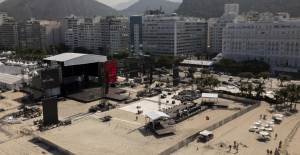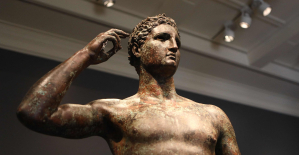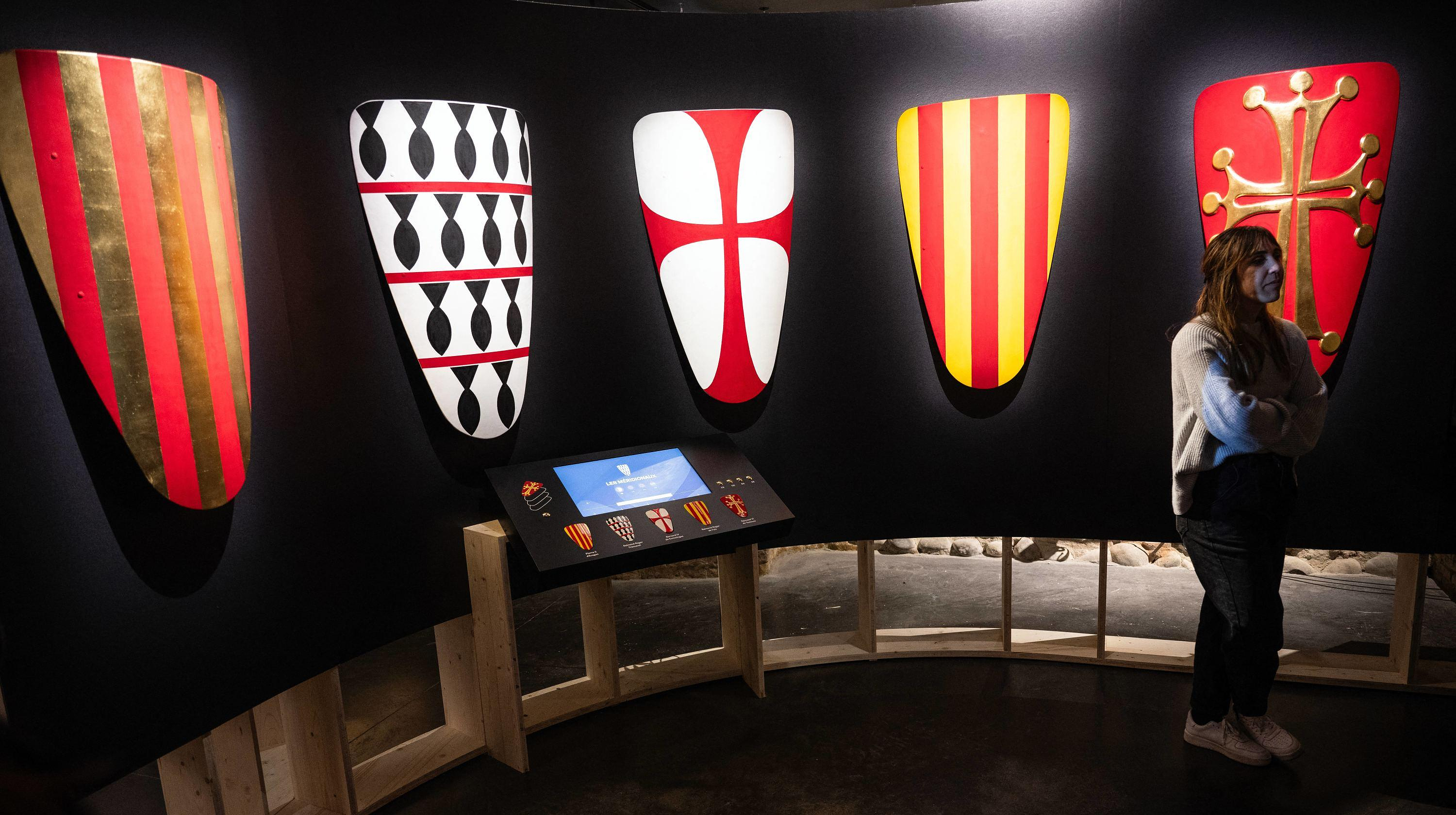The “Cathars” will be from April 5 at the heart of a major exhibition in Toulouse but the quotation marks chosen by the organizers are important, the term itself and what it covers deeply dividing historians today. With the subtitle “Toulouse in the Crusade”, this flagship exhibition of the cultural year in the pink city will offer more than 300 objects (archives, archaeological pieces, reconstructions, etc.) retracing the crusade launched in the South of France at the beginning of the 13th century by Pope Innocent III, while taking stock of the historical debates around the “Cathar heresy”. “We are keen to promote the identity of the city, that of the region and clearly the Cathars participate in this identity”, affirms the deputy mayor in charge of museums, Pierre Esplugas-Labatut, pointing mischievously at the title of “traces » of this Cathar identity the “slightly anti-Jacobin reflex” of Toulouse residents, “of rebellion in relation to the capital”. For the curator of the exhibition, Laure Barthet, the period is in any case “fascinating because it combines all the ingredients that artists and authors have used, particularly in pop culture: it is history of a crusade with military twists and turns worthy of Game of Thrones, it is also in its caricature the struggle of a persecuted community against a blind and deaf power, that of the Inquisition and the King of France. The crusade is at the heart of the first part of the route, at the Saint-Raymond Museum, a vast 16th century building a stone's throw from the Saint-Sernin basilica, one of the emblematic monuments of Toulouse.
Also read: Jean Sévillia: “Cathars, a myth that dies hard”
The visitor immerses himself in this military expedition carried out from 1208 to 1229, discovers its protagonists thanks to a digital device as well as around ten shields bearing their coats of arms, or enters into the life of medieval Toulouse, three times besieged but never taken between 1211 and 1219. You have to walk a few hundred meters in the historic center of Toulouse, not far from the Capitol, to reach the second chapter of the exhibition, at the Couvent des Jacobins, built in the second half of the 13th century and therefore almost -contemporary with the story that is told there. And there, insists Laure Barthet, “you have to keep an open mind”. Because this second part exposes the advances in historical research over the last twenty years, which have challenged certain established ideas. You should know that the term “Cathars” was in fact never used in the South in medieval times. This “portmanteau word” became “established only because certain historians chose it” in the 19th century, explains Laure Barthet, whose exhibition traces the creation of the word. As for the existence of the heresy itself, it is today called into question by a majority of historians. “The word heresy was used as a pretext,” explains Alessia Trivellone, teacher-researcher at the Center for Medieval Studies at the University of Montpellier 3, who points to the desire for “better religious control” of this territory “by the Pope and the Cistercians”, then his desire for “annexation” by the King of France. “The sources are too biased to be considered as certain proof of the existence of heretical communities in the South,” she judges. Others persist in seeing the existence of a “true medieval Christian dissidence” with “its own clergy” in the South of France, like the historian Pilar Jimenez, author of the thesis, “Catharisms, dissident models of medieval Christianity”, who regrets “a selective reading of the sources” by his colleagues. Alessia Trivellone and Pilar Jimenez both appear in the catalog of the exhibition which, organized by a “museum of France, a neutral and scientific institution” intends to “set the terms” of a debate that has become very sensitive, without deciding it, according to Laure Barthet .
At the end of the visit, a bright 3D animation allows you to discover the castles of western Occitania that everyone calls “Cathar”. As a symbol summarizing the shortcuts that the historical narrative sometimes takes: far from being Cathar, these fortresses are in fact the work of the King of France, signs of his final victory and his control over this territory once designated as "heretic ".

 What is chloropicrin, the chemical agent that Washington accuses Moscow of using in Ukraine?
What is chloropicrin, the chemical agent that Washington accuses Moscow of using in Ukraine? Poland, big winner of European enlargement
Poland, big winner of European enlargement In Israel, step-by-step negotiations for a ceasefire in the Gaza Strip
In Israel, step-by-step negotiations for a ceasefire in the Gaza Strip BBVA ADRs fall almost 2% on Wall Street
BBVA ADRs fall almost 2% on Wall Street Sánchez cancels his agenda and considers resigning: "I need to stop and reflect"
Sánchez cancels his agenda and considers resigning: "I need to stop and reflect" The Federal Committee of the PSOE interrupts the event to take to the streets with the militants
The Federal Committee of the PSOE interrupts the event to take to the streets with the militants Repsol: "We want to lead generative AI to guarantee its benefits and avoid risks"
Repsol: "We want to lead generative AI to guarantee its benefits and avoid risks" Osteoarthritis: an innovation to improve its management
Osteoarthritis: an innovation to improve its management The yen jumps 3% then falls again, amid speculation of Japanese intervention
The yen jumps 3% then falls again, amid speculation of Japanese intervention A very busy Friday on the roads of Île-de-France before the Ascension Bridge
A very busy Friday on the roads of Île-de-France before the Ascension Bridge Fraud: the government is preparing new measures for the fall
Fraud: the government is preparing new measures for the fall Nike breaks the bank to keep the Blues jersey
Nike breaks the bank to keep the Blues jersey Madonna ends her world tour with a giant - and free - concert in Copacabana
Madonna ends her world tour with a giant - and free - concert in Copacabana Harry Potter: Daniel Radcliffe “really saddened” by his final breakup with J.K. Rowling
Harry Potter: Daniel Radcliffe “really saddened” by his final breakup with J.K. Rowling Leviathan, New York Trilogy... Five books by Paul Auster that you must have read
Leviathan, New York Trilogy... Five books by Paul Auster that you must have read Italy wins a decisive round against an American museum for the restitution of an ancient bronze
Italy wins a decisive round against an American museum for the restitution of an ancient bronze Omoda 7, another Chinese car that could be manufactured in Spain
Omoda 7, another Chinese car that could be manufactured in Spain BYD chooses CA Auto Bank as financial partner in Spain
BYD chooses CA Auto Bank as financial partner in Spain Tesla and Baidu sign key agreement to boost development of autonomous driving
Tesla and Baidu sign key agreement to boost development of autonomous driving Skoda Kodiaq 2024: a 'beast' plug-in hybrid SUV
Skoda Kodiaq 2024: a 'beast' plug-in hybrid SUV The home mortgage firm rises 3.8% in February and the average interest moderates to 3.33%
The home mortgage firm rises 3.8% in February and the average interest moderates to 3.33% This is how housing prices have changed in Spain in the last decade
This is how housing prices have changed in Spain in the last decade The home mortgage firm drops 10% in January and interest soars to 3.46%
The home mortgage firm drops 10% in January and interest soars to 3.46% The jewel of the Rocío de Nagüeles urbanization: a dream villa in Marbella
The jewel of the Rocío de Nagüeles urbanization: a dream villa in Marbella Europeans: a senior official on the National Rally list
Europeans: a senior official on the National Rally list Blockade of Sciences Po: the right denounces a “drift”, the government charges the rebels
Blockade of Sciences Po: the right denounces a “drift”, the government charges the rebels Even on a mission for NATO, the Charles-de-Gaulle remains under French control, Lecornu responds to Mélenchon
Even on a mission for NATO, the Charles-de-Gaulle remains under French control, Lecornu responds to Mélenchon “Deadly Europe”, “economic decline”, immigration… What to remember from Emmanuel Macron’s speech at the Sorbonne
“Deadly Europe”, “economic decline”, immigration… What to remember from Emmanuel Macron’s speech at the Sorbonne These French cities that will boycott the World Cup in Qatar
These French cities that will boycott the World Cup in Qatar Mercato: Verratti at Barça? A track studied
Mercato: Verratti at Barça? A track studied Rugby: after the defeat during the Six Nations, the Blues will meet the English in September for a test match
Rugby: after the defeat during the Six Nations, the Blues will meet the English in September for a test match Premier League: Liverpool unveils its new jersey for next season
Premier League: Liverpool unveils its new jersey for next season Formula 1: Alpine holds its new executive technical director
Formula 1: Alpine holds its new executive technical director


















